Construction of the Rail Baltica Bridge over the Daugava River Commences in Riga
The Rail Baltica Central Hub in the capital city of Latvia, the construction is being carried out by the construction consortium “BERERIX”, with construction supervision provided by Egis-Deutsche Bahn.
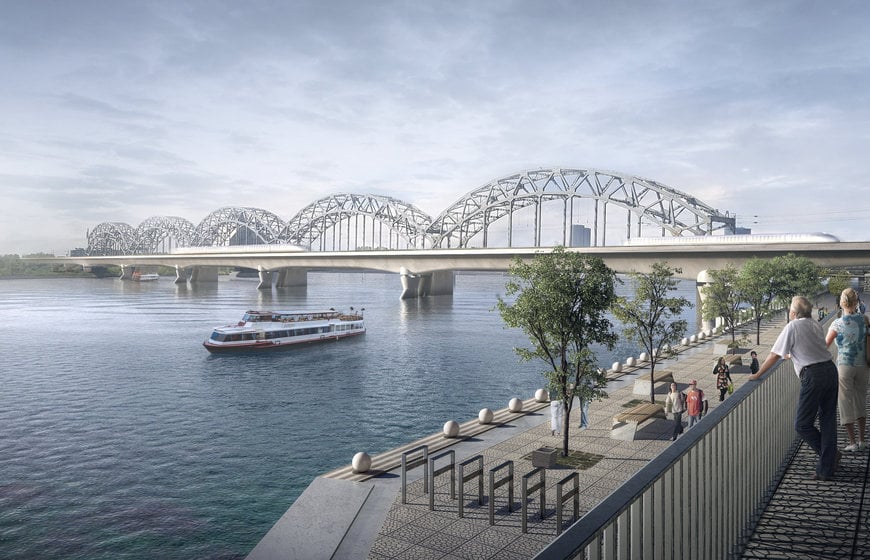
The construction of the bridge begins with the erection of two supports on the right bank of the Daugava, and in the spring, the first support will be built in the water.
This will be a reinforced concrete bridge with architecturally sleek lines, and simultaneously, the bridge will visually preserve the panorama of Riga and not obstruct the existing bridges. The new bridge supports in the water will be positioned directly opposite the existing bridge supports, avoiding any new constraints on navigation in the Daugava.
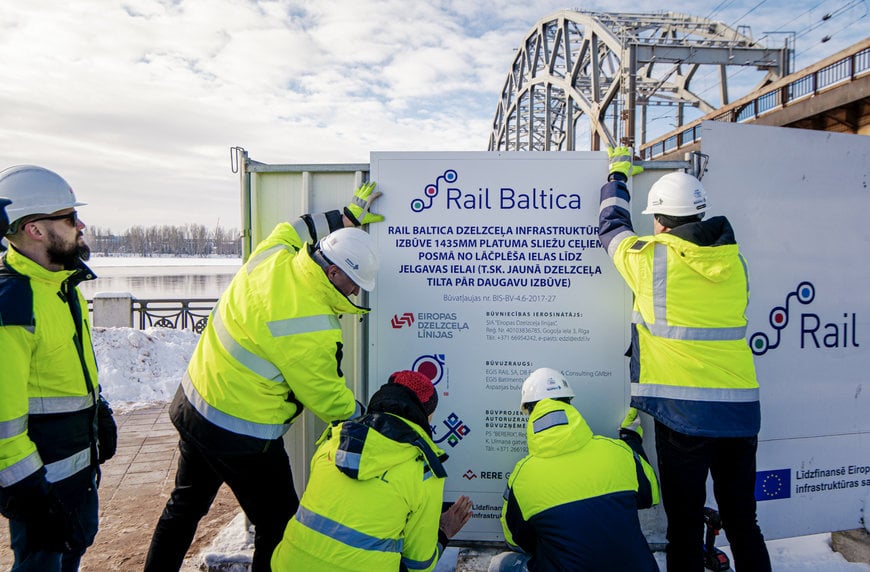
"The construction of the bridge is the next significant phase in connecting Riga's center to the airport, which must commence to ensure passenger transport for Rail Baltica by 2030. The capacity of the existing railway bridge is close to maximum for both passenger and freight flows, necessitating the construction of a new bridge," explains Kaspars Vingris, Chairman of the Management Board at Eiropas Dzelzceļa līnijas. "The bridge construction project is an excellent testament to the engineering capability to reconcile the necessary loads and durability of railway infrastructure with the requirements of the UNESCO historical center."
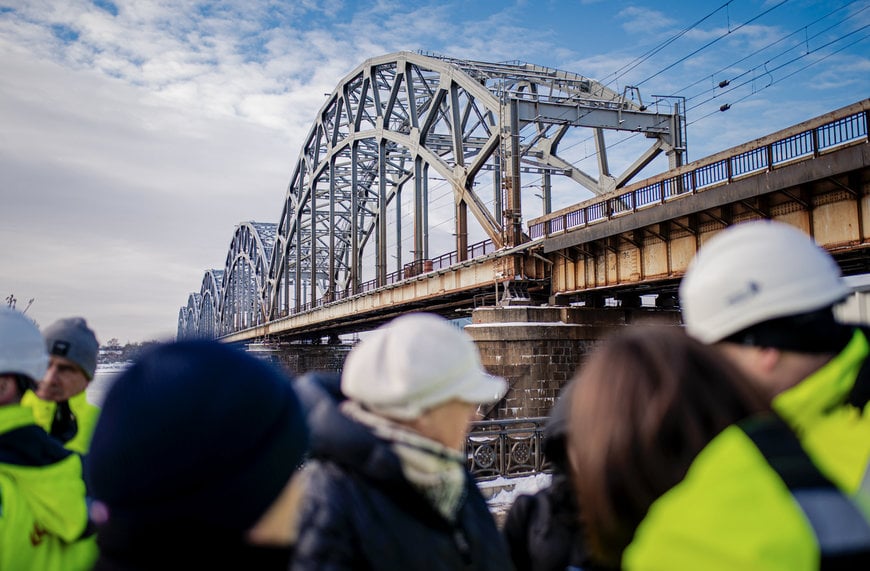
"The start of the construction of the Daugava Bridge is a highly anticipated event for both the project team and the public. In shaping the center of Riga for the next hundred years, as builders, we had to consider various significant factors during the bridge design phase, including achieving the seamless integration of the bridge into the city's panorama without obstructing one of Riga's landmarks – the existing railway bridge's arch structure. We appreciate that the BERERIX team comprises highly skilled professionals in bridge construction, our Italian colleagues, who boast extensive international experience in bridge design and construction. According to the available funding and the organizational plan, we anticipate completing the construction of the Daugava Bridge in approximately three years," notes Guntis Āboltiņš-Āboliņš, CEO of BERERIX.
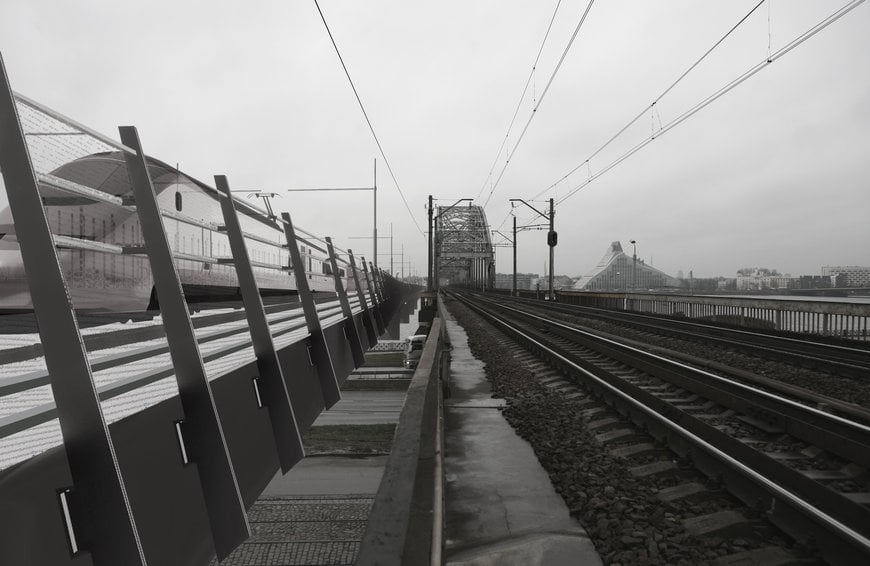
According to the work plan and available funding, the first support construction in the Daugava will also be carried out in the spring. The first phase of bridge construction also includes the construction of approximately 140 meters of span structures. The bridge span will be constructed using the balanced cantilever method, initially building supports, and then symmetrically constructing spans on both sides. Special portals will be constructed for the safety of road users, ensuring safe movement in the construction work zone.
The Rail Baltica railway bridge is quite unique on a European scale because, considering railway loads and technical solutions of the project, the height of the span structure is relatively small compared to its length. The bridge is designed not only to facilitate railway traffic but also to provide a new connection for residents and visitors of the city, including a pedestrian and bicycle lane with multiple access points.
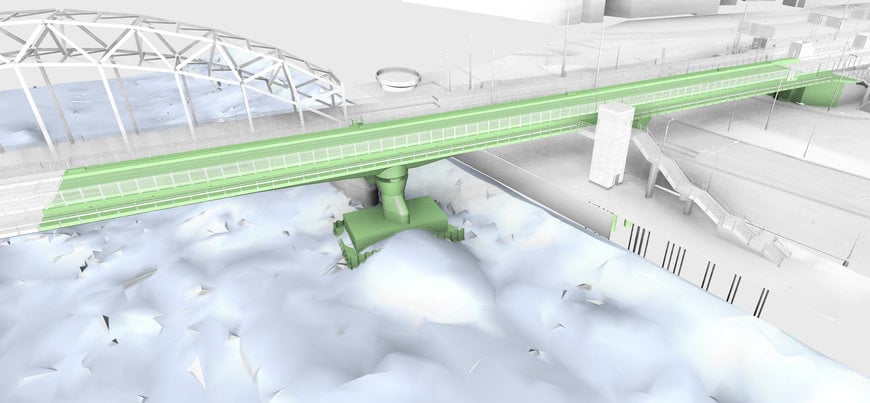
Parameters of the New Rail Baltica Railway Bridge over the Daugava:
- The bridge will be approximately one kilometer (1.15 km) long and almost 17 meters wide. In total, the bridge will have 15 spans. The length of the longest span over the Daugava is 87 m, and over the Small Daugava – 47 m.
- The new bridge will be slightly higher than the existing railway bridge – Rail Baltica tracks will be approximately 2 m higher than the existing bridge tracks.
- Two European standard gauge (1435 mm) tracks are planned on the bridge.
- Unlike the existing railway bridge, which has a metal span, the new bridge will be a reinforced concrete structure, with its supporting part located below the train tracks.
- The distance between the new and existing bridges will range from 5 to 10 meters.
- The new bridge will be integrated into the cityscape – the height above water and the placement of supports will be identical to the existing railway bridge, thus not affecting navigation.
- To ensure additional railway traffic on the bridge, a three-meter-wide walkway will be built, which can also be used by pedestrians and cyclists, significantly improving mobility in the city center. Following safety standards, the walkway will be separated from the tracks by a safety wall. It will also serve as an emergency route for emergency services and an exit for passengers in emergencies, as well as providing access for maintenance of the bridge, trains, and railway infrastructure.
- In total, five connections to the pedestrian path and bike lane are planned for the new bridge.
- Access solutions in the central part (on the right bank of the Daugava): a ramp at Rīga International Bus Station, stairs, and a lift on the embankment promenade.
- To carry out construction work safely, traffic organization changes have been introduced on the nearby embankment during the construction of the intermediate supports of the bridge. Temporary closures of the roadway may occur at night or specific additional lanes may be closed for technological reasons.
The project is funded within the range of 81–85% by the EU's Connecting Europe Facility, with the remaining portion covered by the Latvian state budget.
www.railbaltica.com

